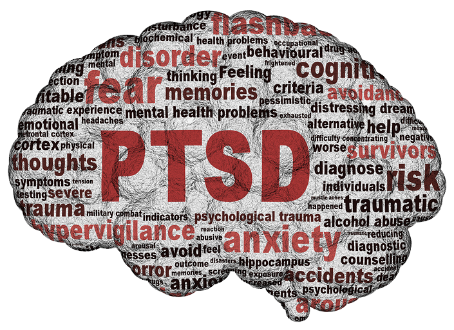Abuse & Post Traumatic Stress Disorder (PTSD)

What is PTSD, Abuse, and Trauma in Adults?
Often, when we think of PTSD, we think of veterans who have served and returned from action. But, did you know that many other people outside the military can struggle with PTSD? Many people may experience a traumatic event, but not everyone will struggle with a diagnosis of PTSD. Regardless if you’ve been diagnosed with PTSD, processing and seeking treatment for your traumatic experience is important. Anyone can experience emotional and/or psychological trauma after an extraordinarily stressful event, it can dissolve your sense of security and leave you feeling helpless and vulnerable. Your subjective emotional experience is what classifies an event as traumatic for you.
Traumatic experiences can involve:
- a threat to your life or safety
- a life-changing injury or illness
- major medical treatment in the first few years of your life
- the breakup of a significant relationship
- a humiliating or deeply disappointing experience
- childhood experiences of abuse (sexual, physical, or verbal), neglect, bullying, separation from a parent, or an unstable or unsafe environment
- natural disasters
- terrorist attacks
- sudden or major emotional loss
- surviving combat experience
- a victim of assault or abuse
- witnessing violence or abuse to others
What are symptoms of PTSD?
Symptoms of PTSD can be broken down into three categories: hyperarousal, intrusions, and avoidance.
Re-experiencing symptoms (intrusions):
- anxiety and fear
- nightmares
- flashbacks
Avoidance symptoms:
- withdrawing from others
- feeling disconnected or numb
- guilt, shame, self-blame
- feeling sad or hopeless
- confusion, difficulty concentrating
- shock, denial, or disbelief
Hyperarousal symptoms:
- anger, irritability, mood swings
- startle easily
- racing heartbeat
- edginess and agitation
- trouble falling and/or staying asleep
- trouble concentrating
Any time something bad happens, it can take a while to get over the pain and feel safe again, but how do you know when you need help? If months have passed since your traumatizing experience and you have not sought out help, but are continuing to experience any of the following, it’s time to reach out:
- using drugs or alcohol to feel better
- feeling emotionally numb and disconnected from others
- increasingly avoiding things or places that remind you of the trauma
- experiencing terrifying memories, nightmares, or flashbacks
- being unable to form close, satisfying relationships
- experiencing fear, anxiety, or depression
- difficulty functioning at work or at home
What causes trauma and PTSD?
Only about one third of people who experience a traumatic event will develop PTSD You are at increased risk if you were already under heavy stress, recently suffered a series of losses, or have been traumatized before (especially earlier in life). Women are twice as likely as men to develop PTSD. In 2000, the estimated lifetime prevalence of PTSD among adults in America was 6.8% (9.7% in women, 3.4% in men). People with PTSD are also commonly diagnosed with another psychiatric disorder, often substance abuse disorder and major depressive disorder.
How can trauma and PTSD be treated?
Talk therapy can help to teach you healthy ways to react to your symptoms and triggers, control anger, keep yourself healthy, and deal with thoughts and feelings about your traumatic event. Treatment may take 6-12 weeks or more. Support from friends and family can be an important part of treatment. The following are typical forms of talk therapy for those suffering from a traumatic experience:
- Cognitive Behavioral Therapy: uses components such as exposure, cognitive restructuring, and various coping skills. Exposure therapy helps to face and control your fear and may include mental imagery and writing. Cognitive restructuring helps you to re-shape your thoughts and beliefs from a traumatic event and increases your awareness of dysfunctional trauma-related thoughts, correcting or replacing them with more adaptive and/or rational thoughts.
- Coping Skills Therapy: can include assertiveness training, relaxation training, and stress inoculation therapy. Techniques can include education, muscle relaxation training, breathing retraining, and role playing.
- Psychodynamic Therapy: explores the psychological meaning of a traumatic event. This occurs when unconscious memories are brought into conscious awareness to reduce symptoms.


